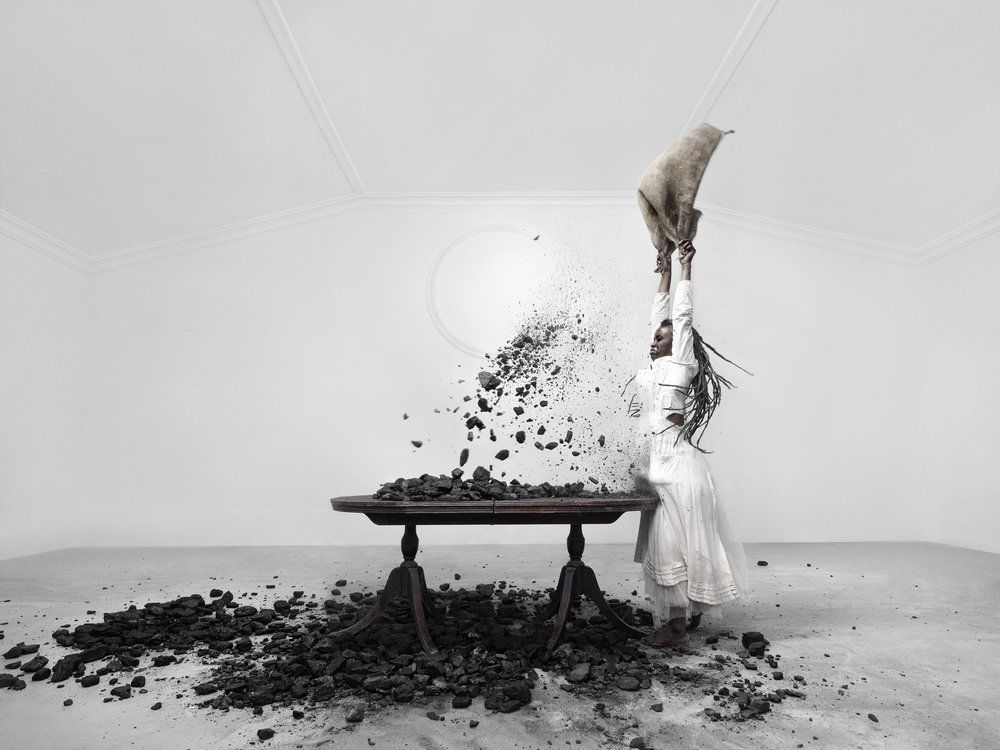African Artists and Interactive Installations: Engaging the Audience
Inhale the air of the African continent, and exhale the spirit of contemporary artistry. As an astute observer of the creative world, I find myself intrigued by the fusion of traditional and modern art forms, especially when it comes to African art. The rich tapestry of Africa’s cultural heritage has long captivated the global art scene with its vivid colors, intricate patterns, and striking symbolism. Yet, as we traverse the landscape of contemporary African art, we find ourselves drawn to the allure of interactive installations, a medium that not only engages the audience but also challenges the conventional norms of artistic expression. In this journal, we shall embark on a fascinating exploration of African artists and their mesmerizing interactive installations, examining the ways in which these captivating creations engage the audience, promote cultural dialogue, and redefine traditional African art forms.
African artists and their interactive installations
To begin our journey, we must first acquaint ourselves with some of the luminaries of the African art scene who have embraced the medium of interactive installations. These trailblazers, with their innovative ideas and boundless creativity, have redefined the art world and captured the imagination of audiences around the globe.
Serge Attukwei Clottey, a Ghanaian artist, has captured the essence of his cultural roots and juxtaposed it against the backdrop of environmental activism through his signature “Afrogallonism” movement. With plastic yellow jerrycans, or “gallons,” as his medium, Clottey fashions them into thought-provoking installations that invite audiences to interact and contemplate the environmental impact of their actions. His installation, “The Displaced,” at Gallery 1957 in Accra, Ghana, featured a labyrinth of jerrycans, which visitors navigated, experiencing the sensation of being surrounded by discarded plastic.
South African artist William Kentridge has long been a force in the world of contemporary art, utilizing various mediums to create immersive experiences. His interactive installation, “The Refusal of Time,” combines video projections, mechanized sculptures, and an evocative soundscape to transport audiences to a realm where time itself is questioned. As visitors traverse the space, they are compelled to engage with the themes of colonialism, history, and the very nature of time.
Mary Sibande, another South African talent, employs her interactive installations to address themes of identity, race, and gender. In her critically acclaimed piece, “Long Live the Dead Queen,” Sibande presents life-sized sculptures of a fictional character, Sophie, donning Victorian-era clothing. These sculptures, placed within a larger installation, invite the audience to interact with Sophie, encouraging a deeper exploration of the complex historical narratives embedded within the artwork.
How interactive installations promote cultural dialogue
One of the most captivating aspects of interactive installations is their ability to foster meaningful cultural dialogue. By encouraging audience participation and breaking down barriers between artist and audience, these installations serve as powerful conduits for cross-cultural understanding.
Audience participation lies at the heart of interactive installations, transforming passive observers into active participants. Through their interactions with the artwork, audiences become part of the creative process, experiencing the piece in a profoundly personal way. For instance, in Clottey’s “The Displaced,” navigating the labyrinth of jerrycans compels visitors to confront their role in the growing environmental crisis, fostering a sense of shared responsibility and prompting further discussion.
In addition, interactive installations often blur the lines between artist and audience, creating a dynamic exchange of ideas and interpretations. Artists like Kentridge and Sibande are able to engage with their audiences through their installations, encouraging open discussion and fostering a sense of connection. In doing so, they create spaces where diverse cultural perspectives can be showcased and celebrated.
Interactive installations also play a critical role in promoting cross-cultural understanding. By presenting complex and sometimes controversial themes in an accessible manner, these installations encourage empathy and dialogue between individuals from different backgrounds. For example, Sibande’s “Long Live the Dead Queen” invites audiences to engage with the historical narratives of colonialism and the impact it has had on the African continent. By exploring these themes, visitors are encouraged to broaden their perspectives and appreciate the nuances of cultural diversity.
Challenging traditional African art forms
Interactive installations have the power to revolutionize traditional African art forms, pushing the boundaries of artistic expression and expanding the role of African artists on the global stage.
Incorporating technology and innovation into their installations, African artists are able to merge traditional aesthetics with contemporary sensibilities. For instance, Kentridge’s use of video projections and mechanized sculptures in “The Refusal of Time” elevates the installation to a level that transcends traditional artistic mediums, while still maintaining a connection to African history and culture.
Moreover, these installations allow African artists to embrace activism and social commentary, using their work as a platform for engaging in important conversations. Clottey’s “Afrogallonism” movement, for example, tackles the pressing issue of environmental degradation, challenging audiences to confront their own impact on the planet.
The growing recognition and representation of African artists in the world of interactive installations has had a significant impact on the global art scene. As their influence spreads, these artists are not only challenging conventional ideas about African art but are also shaping the future of contemporary art as a whole.
In this journal, we have delved into the fascinating realm of African artists and their interactive installations, exploring the ways in which these innovative creations engage the audience, foster cultural dialogue, and redefine traditional African art forms. From the thought-provoking works of Serge Attukwei Clottey, William Kentridge, and Mary Sibande, we have seen how interactive installations possess the power to connect individuals and promote understanding between diverse cultures.
As we look to the future, it is clear that interactive installations will continue to play a pivotal role in African art. The integration of technology and innovation will undoubtedly further enhance these captivating experiences, providing new opportunities for artists to express their visions and engage with audiences around the globe.
In conclusion, the interactive installations created by African artists not only serve as a testament to the boundless creativity and resilience of the African spirit, but also represent a beacon of hope for a world that is increasingly seeking connection, understanding, and empathy. Through their work, these artists continue to leave an indelible mark on the global art scene, inspiring us all to engage with the world in new and meaningful ways.





 No products in the basket.
No products in the basket.